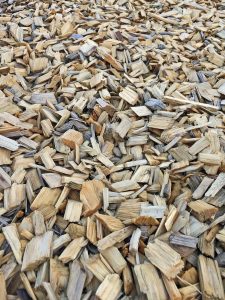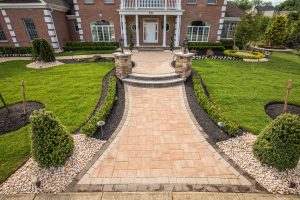It’s gardening season again! If you haven’t already, it’s time to take out that digging tool and break ground.
April showers bring May flowers, but they also bring weeds. You can drastically cut down on weeds in your garden by adding mulch or pebbles. Mulch and stone coverings make flower colors “pop” by adding a background contrast color. Each has its pros and cons, so making a decision between using mulch or stones requires a little research.
Mulch and pebbles work to reduce weeds by blocking light to the plant. They can be used in any part of the landscape with wonderful results. Both can signal “no walk” zones to pedestrians. Some areas and plants take better to mulch, but others can be improved with stones. Here are a few things to consider before buying.
Mulch

Definitely the standard for most landscapers, mulch is the preferred choice for gardeners who wish to add nutrients to the soil. The difference between a mulched plant or tree and bare ones can be stark in growth rates and aesthetics. Indeed, many landscapers consider mulch to be a necessary finishing touch.
Mulch as a ground cover holds water better than topsoil alone, and it also protects that topsoil from washing away in the rain. By absorbing a good chunk of the sun’s heat, mulch helps keep the plants cooler. A blanket of mulch over the winter helps keep the dormant plants warmer than undressed topsoil. Mulch typically contains additives that help kill weeds before they break the surface.
Unfortunately, no mulch is forever; yearly replacement is a must. While mulch is reasonably priced, it is an ongoing expense and should be calculated in your decision. Depending on your landscape, mulching can eat up an entire weekend for Do-It-Yourselfers. Although it seems simple, mulch application has its complications. The layer of mulch should not be too thick or it can adversely affect or even kill the plants. The professionals recommend using no more than 3 inches for gardens and trees. Always follow the manufacturer’s directions.

Knowing when to mulch can also be tricky. The topsoil should be thoroughly thawed before laying down mulch or it may not thaw quickly enough for the plantings to sprout. Your plants should eventually break the surface but it will take longer. Mulching too late means the weeds get a jump on you by establishing a better root system, making them harder to keep at bay during the ensuing months.
Mulch quality varies widely. Seeds, fly larvae, pine bark and other nuisances can show up in mulch. It’s best to buy a good quality mulch from a trusted landscape supplier and then apply it right away. Letting mulch sit may attract egg-laying insects you don’t want in your garden.
Stones

Traditionally popular in the hotter states where grass is tough to maintain, stone cover has been inching its way up the east coast as a beautiful option for mid-Atlantic landscapes. The advantages of stone cover make it easy to understand why. Stones are a wonderful once-and-done endeavor. Unlike mulch, once installed stones don’t need to be replaced. While the upfront cost will be high, the long-term savings compared to the annual purchase of mulch is very significant. Rocks are great at suffocating weeds and show a better success rate at weed-prevention than mulch.
Stone cover is perfect for low-water gardens and landscapes. However, stones aren’t the perfect solution for gardens that may get a lot of sun because they can hold more heat than mulch. This will dry out the soil underneath. Also, growing plants and trees from a stone top base can be challenging, as the stones don’t add any nutrients to the soil. In fact, stones can make soil alkaline instead of acidic, and trees need acidic soil to really grow well.
Stones aren’t totally without maintenance. Homeowners will have to churn the rocks and hose them down once in a while because dust and soil carried by the wind can settle in the spaces between the stones and in turn, host weeds.
Landscape Decisions

In general, use mulch in gardens that need fertilizing. Stones have their place, too, though. Stones are great for lining hardscaping elements like walkways and patios. They add interest and definition to the hard edges and help transition the hard space to the soft space of the garden or grass. Paths made of stones are also advantageous because they don’t add to the “impervious surface” percentage regulations most municipalities enact. Stones at the edge of a rain garden can be a lovely way to elevate the look of the area.
Mulch will be the preferred cover for the large majority of landscapes, but adding some stone cover or edging can add flair your landscape. Take a look at your space and see where you can save some effort and add some interest with stones. A little variety goes a long way in curb appeal. Happy planning!